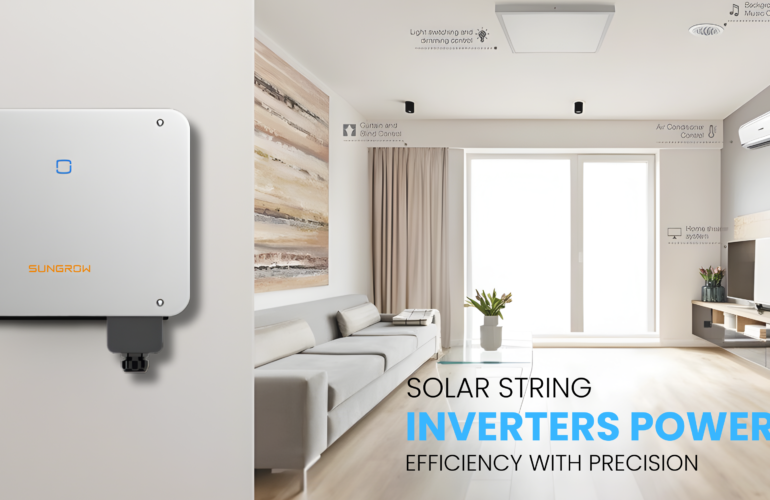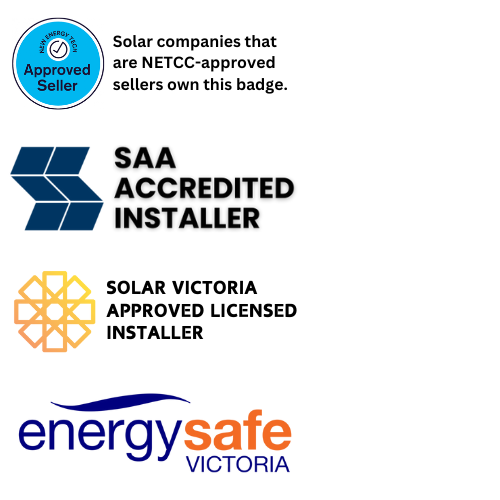RCD, RCCB & RCBO: Required Safeguards for Your Victorian Solar Setup
For electrical safety, three abbreviations are crucial in any new solar system: RCD, RCCB, and RCBO. Having installed solar in Victoria for more than ten years, we often get questions about these devices and why they’re needed. This easy-to-understand guide explains these key safety components, details their importance for solar, and covers the essentials for Victorian homeowners in 2025.
The Fundamentals: What's the Risk?
Before we get into technical terms, let’s clarify what we’re trying to safeguard against. The current naturally flows to the floor mostly. Sadly, the human body can become that pathway if you contact a defective device or electrical part. Even minor currents can be hazardous:
- 1-10 mA: You can feel the gentle tinkling.
- 10-30 mA: Shock causes pain; muscle contractions may occur.
- Over 30 mA: Breathing may become difficult, and it can cause dangerous heart problems like ventricular fibrillation.
- 100+ mA: High chance of cardiac arrest and significant burns.
Victoria’s electrical safety rules exist because they mandate safety measures designed to identify hazardous current leaks and cut off the power supply to prevent injury.
RCD (Residual Current Device): Your Initial Protection
What it does: An RCD is a safety device that monitors the flow of electricity and quickly shuts off power if it detects an imbalance between the live and neutral wires.
Here’s how it functions: When a circuit is working correctly, the electricity entering through the live wire should match the electricity exiting via the neutral wire. If there’s a mismatch (residual current), that suggests electricity is escaping, possibly through a person. As soon as an RCD detects this mismatch, it quickly cuts off the power.
Here’s an example: Imagine mowing a lawn with an electric mower on grass that’s a little wet. If some humidity gets into a tiny split in the power cord, electricity could escape to the ground. This would cause a dangerous electric shock without a Residual Current Device (RCD). If you do have an RCD, it notices the leaking current (usually around 30mA) and cuts off the power in under 30 milliseconds. This is quicker than the amount of time that would cause a problem with your heart.
RCCB (Residual Current Circuit Breaker): Targeted Protection
What it is: An RCCB is a specific type of RCD that ONLY provides protection against residual current (leakage).
How it works: Just like the broader RCD category, an RCCB monitors current balance and trips when it detects leakage. However, it does NOT provide overcurrent (overload or short circuit) protection.
Real-world example: Your bathroom circuit has an RCCB installed. If your electric shaver develops an internal fault causing current to leak through its casing, the RCCB will trip, preventing a potentially fatal shock. However, if you were to connect too many high-powered devices to that circuit, exceeding its current rating, the RCCB wouldn’t respond to this overload situation – you’d need a separate circuit breaker for that protection.
RCBO (Residual Current Breaker with Overcurrent protection): Complete Protection
What it is: An RCBO combines the functions of an RCD and a circuit breaker in one unit, providing both leakage current protection AND overcurrent protection.
How it works: An RCBO monitors for both current imbalance (like an RCD) and excessive current draw (like a circuit breaker). It will trip if either condition occurs.
Real-world example: Your kitchen has an RCBO protecting its power circuit. If your refrigerator develops a fault causing leakage current, the RCBO will trip, preventing shock hazards. Similarly, if you simultaneously run your microwave, electric kettle, toaster, and coffee machine, causing circuit overload, the RCBO will also trip, preventing overheating and potential fire risks.
Why This Matters for Solar Installations
When installing solar systems in Victorian homes, we pay particular attention to electrical protection devices because:
- Bidirectional Power Flow: Solar systems introduce power generation into your home, creating bidirectional power flow that requires proper protection.
- DC Components: Solar panels generate DC electricity, which is converted to AC. Both sides of this system need appropriate protection mechanisms.
- Weather Exposure: External components of solar systems are exposed to weather conditions, increasing the importance of leakage current detection.
- System Integration: Solar systems integrate with your existing electrical infrastructure, often requiring switchboard modifications and updated protection.
- Battery Considerations: If your system includes battery storage, additional protection considerations apply due to the energy storage capacity.
For most modern solar installations, we recommend RCBOs for individual circuits as they provide comprehensive protection in a single device. This ensures protection against both leakage currents (safety) and overcurrents (equipment protection).
Victorian Regulatory Requirements in 2025
As of 2025, Victoria follows the Australian/New Zealand Standard AS/NZS 3000:2018 with the latest amendments, which mandates:
- RCD protection for all final subcircuits in domestic installations
- Maximum RCD tripping current of 30mA
- Maximum disconnection time of 300ms
- Type A RCDs for circuits that may have DC components (relevant for solar)
For solar installations specifically, the Clean Energy Council (CEC) guidelines and AS/NZS 5033 also apply, requiring appropriate DC circuit protection and AC connection compliance.
Maintenance and Testing
RCDs, RCCBs, and RCBOs are critical safety devices that require regular testing:
- Homeowner testing: Press the test button once every three months (we suggest when the seasons change as an easy reminder)
- Professional testing: Annual verification by a licensed electrician is recommended
- Solar-specific: Annual solar system inspection should include verification of all protection devices
When the test button is pressed, the device should immediately trip. If it doesn’t, contact a licensed electrician immediately.
Upgrading Older Homes
Many older Victorian homes have insufficient protection by today’s standards. When we install solar systems, we often recommend upgrading the switchboard and protection devices if they don’t meet current requirements.
Signs your home might need an electrical protection upgrade:
- Ceramic fuses instead of circuit breakers
- No RCD protection on some or all circuits
- Switchboard dated before 2000
- Previous solar installation done before current standards
Conclusion: Safety Beyond Compliance
At Electrical Masters, our commitment goes beyond simply meeting regulations. With over a decade of installation experience across Victoria, we understand that these safety devices protect what matters most – your family and property.
When we install solar systems, we ensure your electrical protection is comprehensive, up-to-date, and properly integrated with your new renewable energy system. Our CEC-accredited installers and licensed electricians take pride in creating solar solutions that are not just efficient and environmentally friendly but also meet the highest safety standards.
If you’re considering solar and would like a free assessment of your current electrical protection, contact our team today. We’re happy to explain how these systems work together to provide decades of safe, reliable renewable energy.









